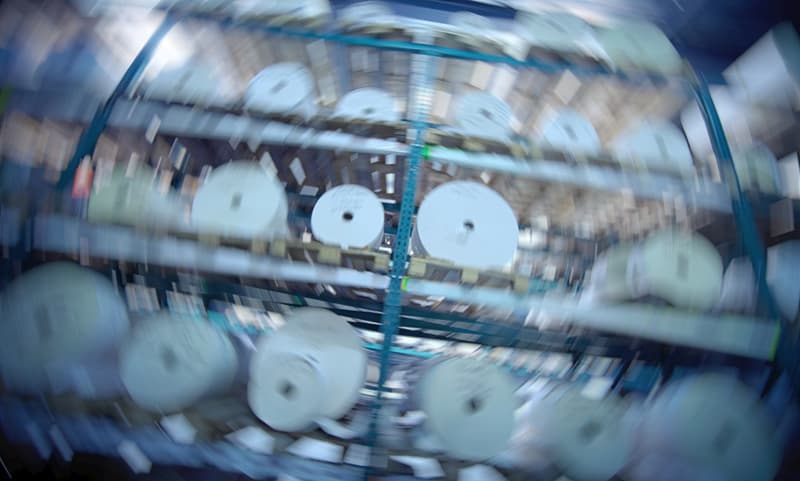In 2021, European self-adhesive labelstock demand increased by another 7% to almost 8.5 billion square meters, after an increase of 4.3% in 2020. Underlying these growth numbers were completely opposite fundamentals. Whereas in 2020, excessive demand for self-adhesive labels was driven by the need for labels in essential sectors like food, personal care, medical and pharmaceutical products, demand peaked again in the second and third quarters of 2021 due to the unexpected strong economic recovery around Europe. However, after emerging general supply chain disruptions since last summer, the fortunes of the label industry have turned dramatically since the beginning of 2022 by long-lasting union strikes in a specialty paper mill in Finland and recently, another supplier in Spain.
The mills on strike are responsible for more than 25% of the paper grades used for the manufacture of materials used to print, embellish and cut self-adhesive labels in Europe. Although the supply chain of raw materials for labels has been underpinned relatively successfully in early 2022 by label converters themselves (largely funded by the strong preceding trade period and existing label material reserves), this trend is unlikely to continue into the second quarter of 2022. Persistent self-adhesive materials shortages could then severely disrupt the supply of functional and regulatory labels and packaging in food, pharmaceutical, healthcare and logistics sectors around Europe.
The impact of labels
Assuming an average ‘gross’ size of 10 cm2 per label, 8.5 billion square meters consumed in Europe per annum corresponds with an astronomic amount of nearly 16.5 billion labels consumed each week. That’s nearly 50 labels per capita (per week!). Labels are used for everyday products and services like packed meat and poultry, beverages, readymade meals, personal care items at the drugstore, prescribed medication, supermarket price-weigh tagging, warehousing, home deliveries, passenger tagging etc. etc. As part of the total product value, the cost of a single label may be low, but the damage of its lack of availability to goods manufacturers, logistics companies, consumers and ultimately European economies and societies is considerable.
Since the end of January, FINAT, national label associations and individual label printers have appealed to the parties concerned in the strike to take into consideration the broader impact of the dispute to their downstream customers: labelstock producers, label manufacturers, brand-owners, retailers and, finally, the consumers in the shops or online. So far, these appeals have not been reflected in an acceleration of the negotiation process.
Indispensable labels
FINAT President Philippe Voet comments: “As we have seen during the Pandemic, labels are an indispensable component of the essential infrastructure that are difficult to replace. Our members have always been agile and innovative in finding new and alternative solutions for their customers. Even today there is limitless creativity within the label value chain and community to secure both critical label supplies and keeping our employees working. Both are very close to our hearts and we don’t like to see the relationship we have with them mortgaged by this ongoing dispute. Without an adequate pipeline of raw materials, label converters will be forced the extend lead times, prioritise customers, put part of the capacity on hold and send workers on leave because there are simply not enough materials to convert to labels. We once again appeal to the partners engaged in the dispute to do everything possible to resume production without further delay. Against the already tight supply chain conditions since last summer and now the hideous invasion of Ukraine by a neighbouring country, a further extension of the strike even beyond the current date of 2 April would be socially and economically unsustainable.”
Going forward: cross sectoral dialogue on supply chain management
FINAT Managing Director Jules Lejeune concludes: “At this particular moment is now hitting our industry, and we’re in it together with the commercial printing sector that is represented through Intergraf. But this is not just about our two sectors. There are many supply chains, also nearby, that have the same ‘defect’ of global dependency on an ever smaller number of leaner players. Going forward beyond the current crisis, FINAT and the members of the European Label Community would like to use the lessons learned from the current case to engage in a cross sector dialogue to better spread the risk to societies, in terms supply chain management education, in terms of industry collaboration and in terms of public policy. At our European Label Forum in June, we will plant the seeds for such a dialogue.”
